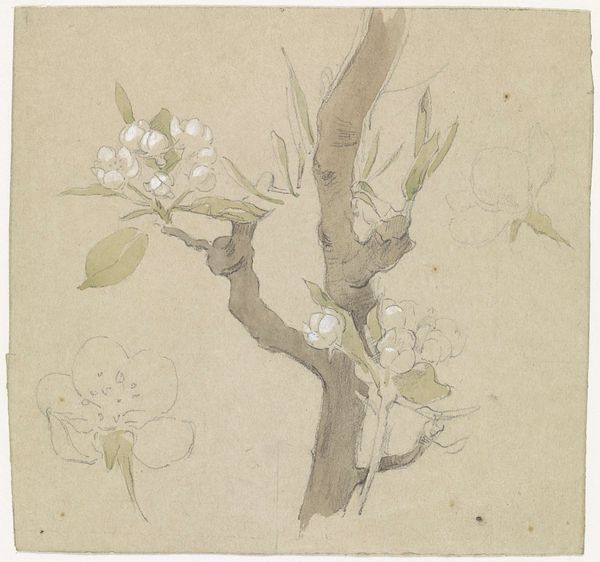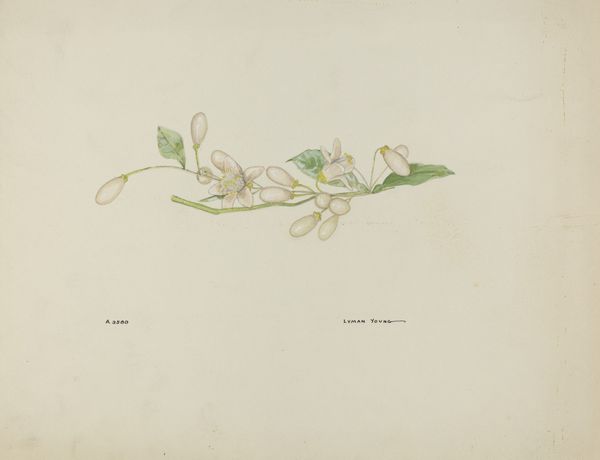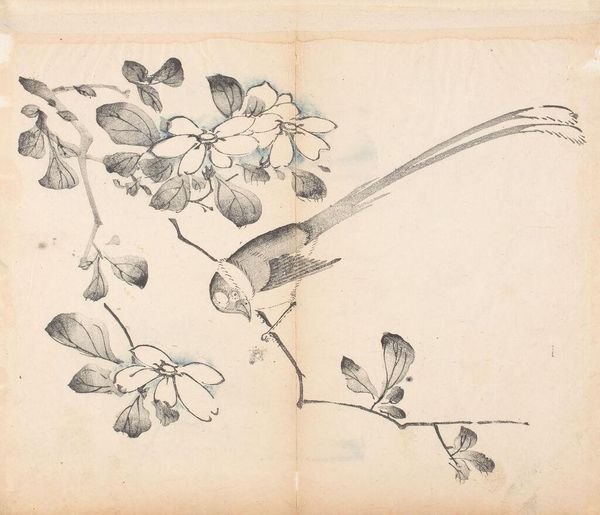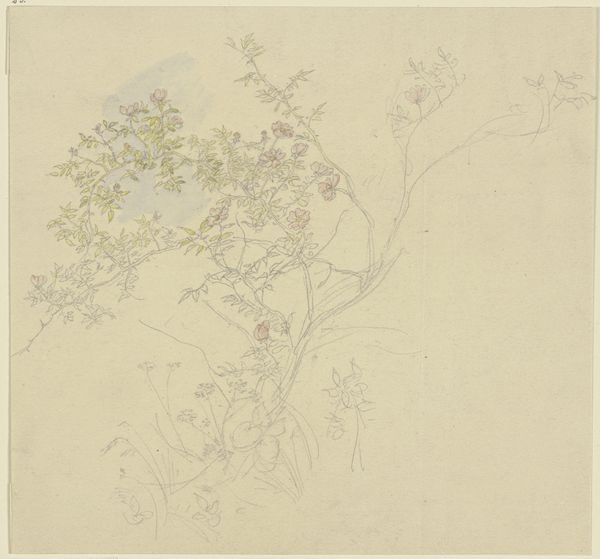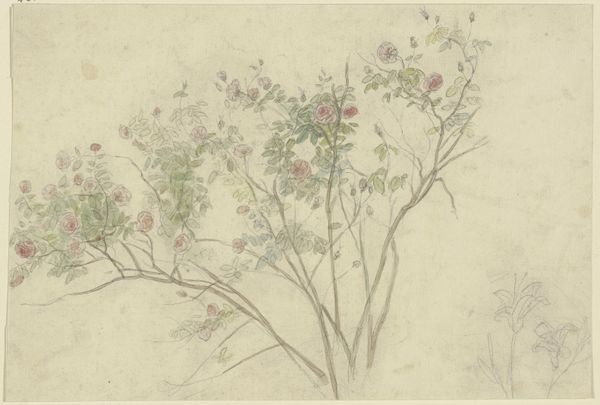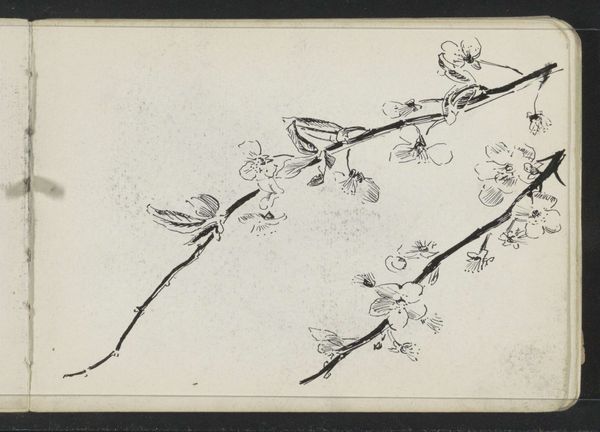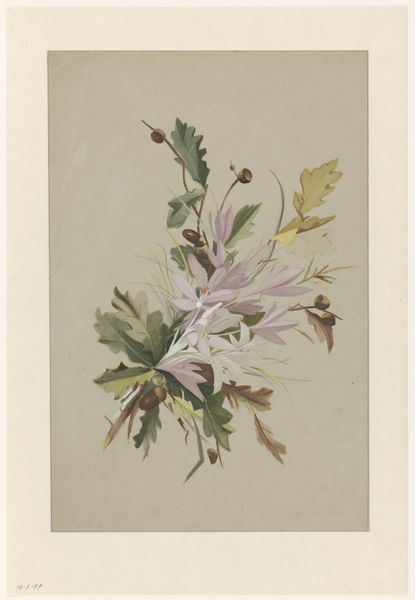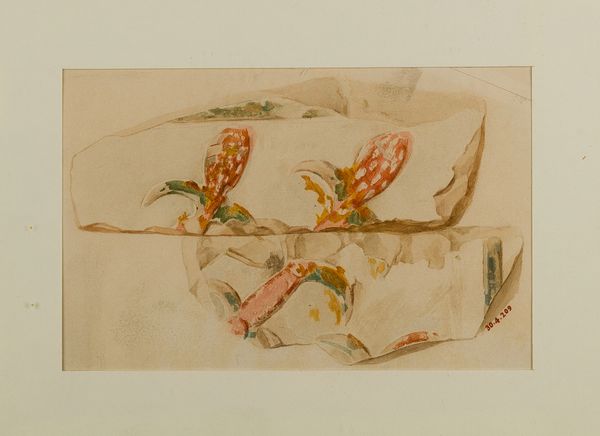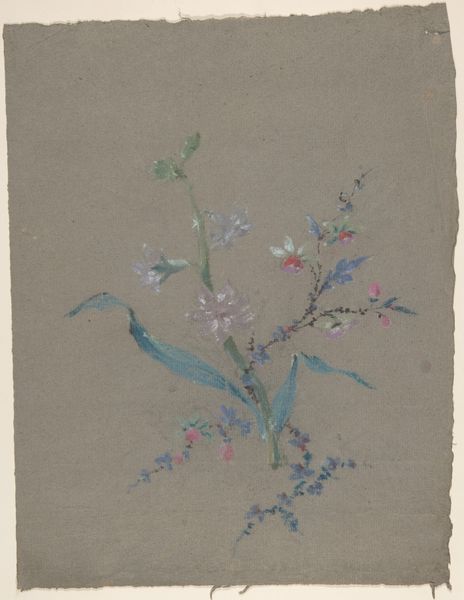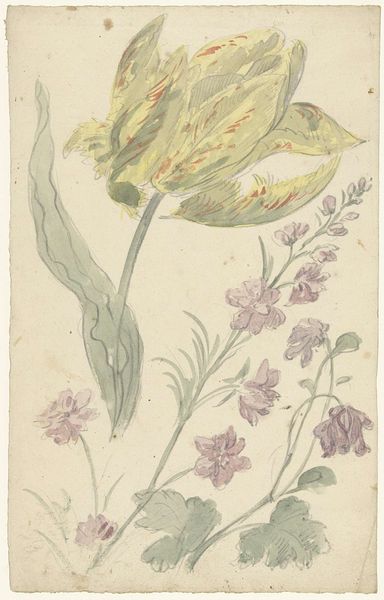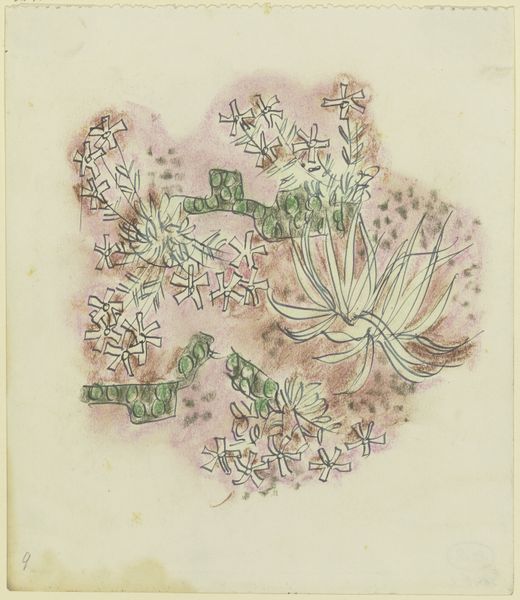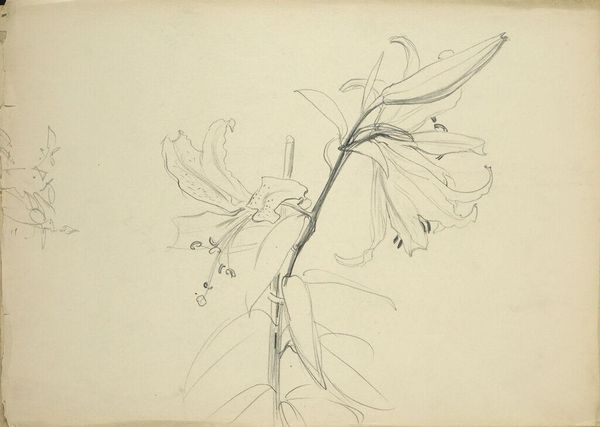
watercolor
#
water colours
#
impressionism
#
landscape
#
watercolor
#
watercolor
Copyright: Rijks Museum: Open Domain
Editor: This is "Bloemen," by Bramine Hubrecht, created sometime between 1865 and 1913. It’s a watercolor piece at the Rijksmuseum, and I find its fragility and light colors so evocative. How do you interpret this work? Curator: The blossoms, rendered in delicate watercolor, strike me as emblems of transient beauty. Do you sense how Hubrecht uses line and wash not to simply represent botanical forms but to evoke feeling, perhaps of melancholy, or quiet observation? Editor: Yes, definitely melancholy, a sort of faded beauty. The drooping forms give me that feeling. Curator: Note the ambiguous space. Are these specimens observed closely, scientifically? Or is the artist more interested in the subjective experience of seeing, the kind of emotive language of flowers that was very much in vogue during the late 19th century? Editor: That’s interesting – so it could be more about symbolic representation than scientific accuracy? Curator: Exactly. Hubrecht might be drawing on a deeper well of cultural meanings assigned to flora over centuries. Flowers often stood for something beyond their aesthetic appeal. Think of vanitas paintings... how do those traditions speak through her, here? Editor: That makes me look at the wilting petals differently – as maybe a memento mori, a reminder of mortality. Thanks, I hadn’t considered the symbolic layer at all! Curator: And it’s a fitting observation. Seeing the symbolic language enhances our appreciation of what initially may have been just a pretty rendering of flora. Editor: I’ll certainly keep that in mind looking at botanical art going forward.
Comments
No comments
Be the first to comment and join the conversation on the ultimate creative platform.

